Nonprofit Technology & Fundraising Blog
Subscribe to our mailing list

May 6, 2025 | Donor Engagement, Donor Retention, Fundraising Communication
Grant funding is more competitive than ever. While nearly 90% of nonprofits plan to apply for foundation or government support, few secure significant funding right away. It often takes more than two years for a nonprofit to receive its first grant, and even then, most organizations only receive a few modest awards per year.
With so many organizations seeking limited resources, the ability to build strong, ongoing relationships with funders can set your nonprofit apart. That starts with how you communicate—before, during, and after the grant process.
In this guide, we’ll explore how a thoughtful communication strategy can help you build trust, demonstrate alignment, and turn funders into long-term partners, not just one-time supporters.
Before you ever reach out to a grantmaker, make sure you understand their mission, focus areas, and funding history. This is where your skills as a grant writer come in handy. Read their guidelines, explore their website, review their Form 990s, and look at who they’ve funded in the past. You want to be sure your organization is a good fit before you invest time in writing grants.
If the funder allows it, send a short, respectful email introducing your organization. Express alignment with their mission and ask if they’d be open to a brief conversation. Many funders appreciate this proactive approach.
Get an introduction through a mutual connection, such as a board member. A warm referral can open doors more effectively than a cold email. Or, send a friendly note to the prospective funder.
Example: A development director might say: “Hi Jane, I reviewed your foundation’s priorities around food insecurity and saw your recent grant to Daily Bread Food Bank. Our organization serves a similar population, and we’d love the chance to introduce our new mobile pantry initiative. Would you be open to a short introductory call?”
Once you’ve connected, use the opportunity to gather insights that will shape your proposal to align with both parties.
Good questions to ask include:
Note: Foundations often rely on trustees or committees to approve funding. Your point of contact may not be the final decision-maker, so be sure to clarify the internal process early on.
These questions show that you’re not just asking for money—you’re looking to align your work with their impact goals.
Pro tip: As you learn more about a grantmaker’s mission and timeline, you might realize your project isn’t quite the right fit—or not quite ready yet. That’s okay. It may feel counterintuitive, but be honest about it. Tell the funder you admire their work and want to stay in touch for future opportunities.
Before working on a proposal or seeking funding, ask permission to solicit based on the insight you gathered—and if the timing feels right. This gesture shows respect for the funder’s process and avoids unsolicited pitches unless there is an open call for proposals.
No two funders or requests are the same, and your proposals shouldn’t be either. Tailor proposals to each funder’s guidelines and priorities. Use their language, mirror their goals, and explain how your project supports their mission.
Avoid jargon, buzzwords, or overly complex explanations. Simplicity and clarity win every time. Clear language is a hallmark of effective grant writing, especially when funders review dozens of proposals.
Grantmakers don’t expect perfection—they expect honesty. Be realistic about what your organization can achieve with the funding. Include thoughtful goals, a detailed budget, and a reasonable timeline.
Common pitfalls to avoid:
Track your grant goals in real time with DonorPerfect’s dashboard tools. Set milestones, monitor outcomes, and ensure you’re meeting funder expectations with data you can trust.
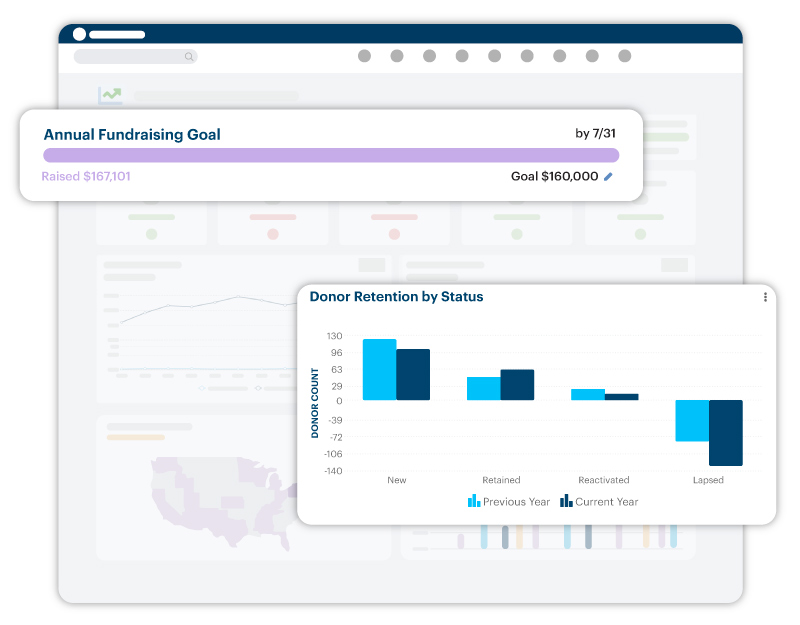
Let funders see how your project fits into your organization’s broader mission and strategy. Funders are more likely to invest when they understand the long-term vision.
Example: Instead of only writing, “We’re requesting $10,000 for our youth tutoring program,” expand on the request by saying, “This grant of $10,000 will expand our youth tutoring initiative, which is part of our larger 5-year education equity plan to close achievement gaps in underserved schools.”
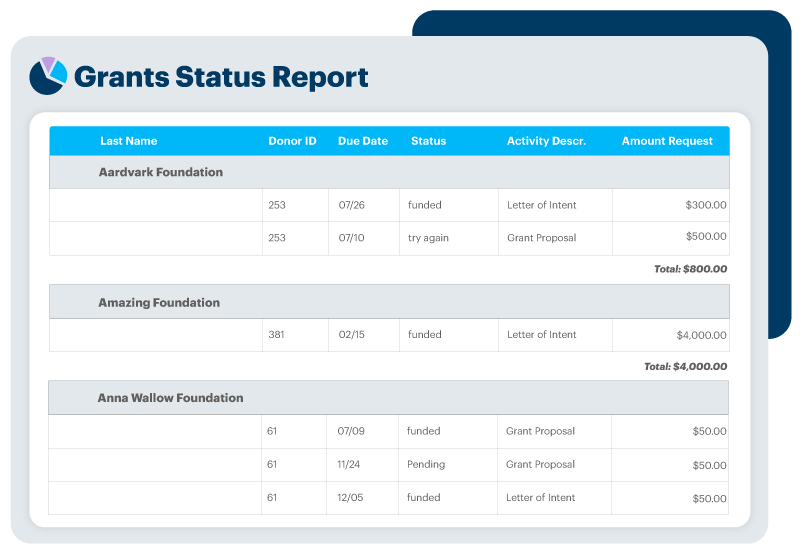
Track when grant funds are received, disbursed, and applied to your programs using DonorPerfect’s grant management module. Keep your whole team informed and ensure alignment with funder expectations.
Once a grant is awarded, clarify how and when funds will be disbursed. This ensures financial and programmatic alignment. Some may require a signed agreement, invoice, or proof of project initiation before the first payment is processed.
Best practices:
Pro tip: Treat each installment as a moment to build trust. A photo or quick note can go a long way.
For more on common disbursement schedules and practices, see this overview of how grant funds are typically disbursed.
Acknowledgment goes a long way. As soon as you’re notified of a grant award, send a personalized thank-you note. When the funds arrive, thank them again. Gratitude is the foundation of stewardship. If your nonprofit has a newsletter or blog, publicly recognizing funders (with their permission) is a nice touch.
Make your thank-yous personal with DP Video. A written note is powerful, but a personalized video message can take your stewardship to the next level. With DP Video, you can record and send heartfelt thank-you videos directly using DonorPerfect. Show funders the impact of their support in your own words—no camera crew is required.
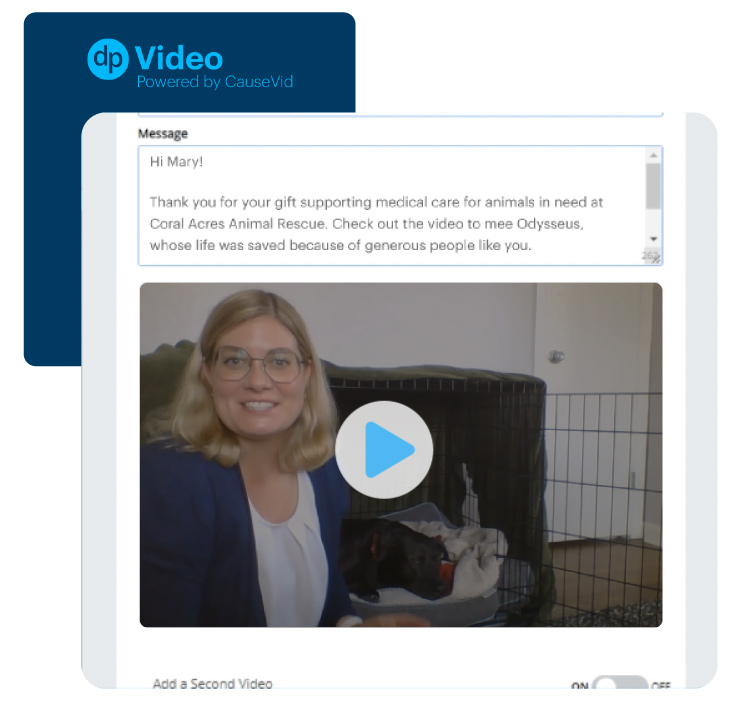
Even if a grantmaker doesn’t require mid-year or quarterly updates, consider sending a brief email update every few months. Share what you’re working on, any early wins, and how the grant is being used. These updates are a critical part of a nonprofit grant communication plan and show that you value transparency. This can be a plain-text email, no need to create something fancy without being asked. Grantors know you are hard at work!
Updates like these do more than fulfill a reporting requirement—they turn your grantor into an invested partner.
Some funders prefer formal email updates, while others like informal calls or virtual check-ins. When in doubt, ask about their preferred communication frequency and style.
When appropriate, invite grantmakers to events, virtual meetings, or site visits. Let them see their dollars in action. This kind of transparency and inclusion reinforces their decision to fund your work and builds a deeper relationship.
The final report isn’t just a conclusion—it’s a springboard for future engagement.
Don’t just report—engage. Use DonorPerfect to track outcomes, build custom reports, and segment funders by shared priorities, so your stewardship feels personal and proactive. Need to brush up on your reporting skills? Join us for Day 2 of the virtual DonorPerfect Conference this June for free fundraising training sessions!
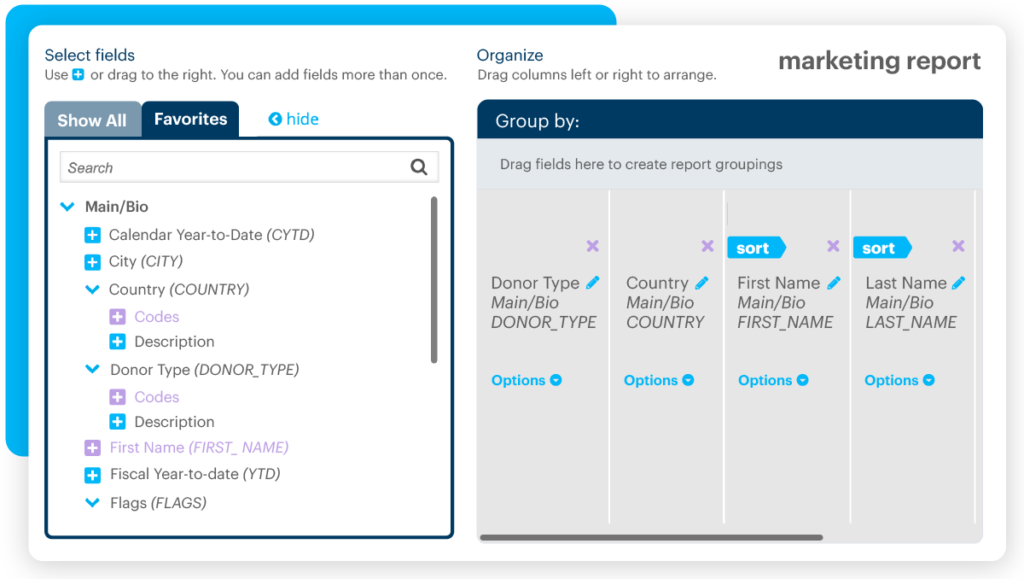
Your final report is a chance to show impact and pave the way for future funding.
Include metrics, but also:
Final reports don’t have to feel final. With DonorPerfect, create progress snapshots, visual impact reports, and personalized outreach for every funder. Build stewardship into your reporting process from day one.
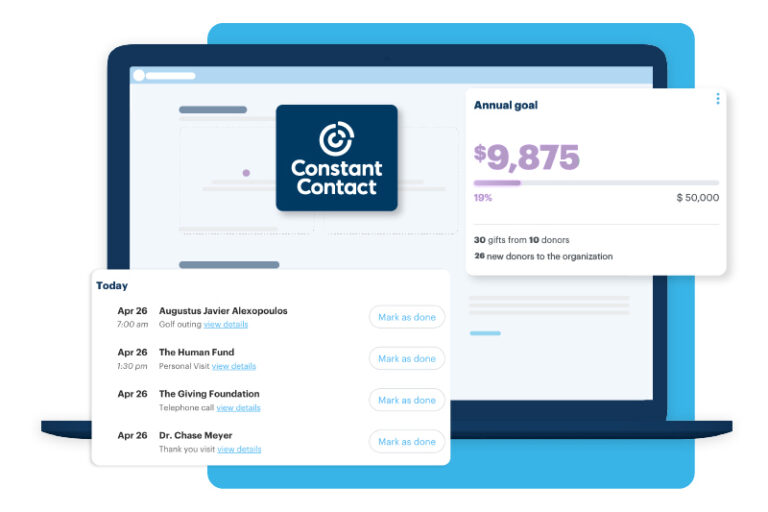
If you run into unexpected hurdles, don’t shy away from them. Grantmakers understand that change is part of the nonprofit world. What matters most is how you adapted and what you learned. This kind of honest communication builds long-term credibility.
End your report with a clear thank-you and an invitation to continue the relationship. Mention future initiatives or opportunities for partnership. Leave the door open for renewed or increased support.
Pro tip: Keep a record of all communications—emails, call notes, thank-yous, and reports. It helps ensure consistency and continuity across your team, especially during staff transitions.
For more ideas on crafting compelling reports, check out Candid’s guide to communicating program impact.
Want to take your reporting even further? Explore these grant reporting best practices for tips on leveraging data effectively.
The landscape of grantmaking is evolving, and staying up to date with current trends can make your communication efforts even more effective.
Use AI tools to streamline proposals and personalize outreach. Consider how AI can help you research funders or automate parts of your reporting.
Sample AI prompt: “Write a personalized follow-up email to a grantmaker who funded our food security program last year. Include a brief update on impact, express gratitude, and introduce our new initiative aligned with their giving priorities.”
Data should complement your storytelling. Funders want to see measurable outcomes paired with meaningful narratives. Use reporting tools to uncover trends and pair metrics with human stories, like a single beneficiary’s breakthrough or a community-wide outcome.
Foundations run by Gen Z and Millennials often value authenticity, transparency, and real-time communication. Adapt your tone and tools accordingly. An AI assistant or communication tools can help you adjust your message tone to match younger audiences, while text messaging and video updates offer a fast, personal way to connect.
If you’re part of a coalition, highlight it. Funders increasingly want to see collaboration. Clarify your organization’s role in the partnership and how collective impact is measured using shared metrics and coordinated communication.
Use CRM features like automation and tagging to build a communication cadence with each funder. For example, schedule follow-ups around key milestones or reporting deadlines. The right tools can help you build workflows that reduce the manual lift and keep funders engaged without added stress.
If you’re awarded a multi-year grant, structure your communication plan to align with annual benchmarks and touchpoints. Update funders regularly on progress to date, shifts in priorities, or adaptations based on lessons learned.
Ensure internal clarity on who owns each part of the grant relationship—from proposal submission to programming to impact reporting. Consider maintaining a shared grant stewardship calendar so your team can deliver consistent, timely communication.
If a funder chooses not to renew support, don’t write them off. Reach out respectfully for feedback. Use that insight to adjust and maintain the relationship. Keep them informed about your progress—many organizations regain funding this way. Funders may only be able to support one organization a set number of times, so changes in funding might be related to policy and not the great relationship you’ve built. If things do change, you will be top of mind.
Track key grant KPIs—like funder response rate, time from award to disbursement, and renewal percentages—inside DonorPerfect. Use this data to improve stewardship over time.
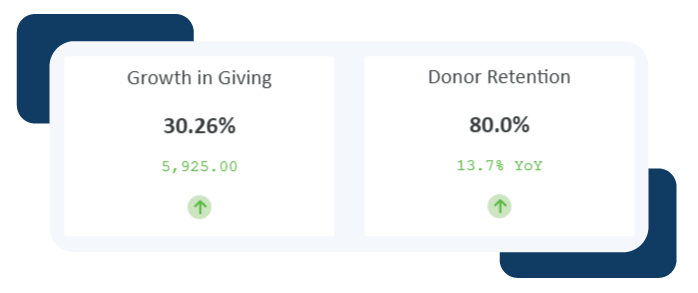
Whether you’re new to writing grants or looking to elevate your craft, great grant writing goes beyond compelling proposals—it’s about cultivating meaningful, ongoing relationships with funders. Every touchpoint, from your first introduction to your final report, is an opportunity to build trust, show impact, and apply best practices for grant communication that lead to funding renewals.
Grant communication is donor stewardship. When you approach funders with the same intentionality you bring to loyal donor relationships, you increase your chances of renewal, investment, and long-term collaboration.
Ready to strengthen your grant strategy? With DonorPerfect’s grant management tools, you can centralize funder records, track deadlines, automate reports, and nurture funder relationships—all in one place.
Explore how DonorPerfect can support your grant team.
1. How often should grant writers communicate with grantmakers outside of reporting requirements?
2. What’s the best way to build a relationship with a grantmaker if they don’t allow pre-proposal contact?
3. What should a grant writer do if a funder declines a proposal?
4. How can grant writers stand out in a crowded funding landscape?
5. Are there tools that help grant writers manage communications and deadlines?
6. How can I automate part of my grant reporting?
Follow us on social!